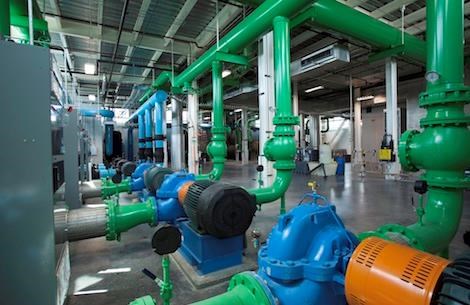Arresting Indoor Air Quality Criminals in Metal Finishing and Chemical Tanks
These so-called ‘criminals’—indoor air quality criminals, that is—can escape from open surface tanks causing irritation or harm to operators.
#pollutioncontrol

Engineering, architecture and consulting firm, Burns and McDonnels' Angela Vawter has an interesting take on ways to improve air quality in metal finishing operations, and also for any shop which has chemical tanks:
Featured Content
"When you think of criminals, the first thing that comes to mind probably isn’t humidity or hazardous mists and vapors. But these so-called ‘criminals’—indoor air quality criminals, that is—can escape from open surface tanks causing irritation or harm to operators, as well as corroding the surrounding building structure and supporting utility systems. Properly ventilating exhaust and supply air of open surface tanks is key to thwarting these fugitives before they can inflict damage—and can ultimately save a company a whole lot of trouble."
To read more of Vawter's take, please click here.
RELATED CONTENT
-
Aluminum Surface Finishing Corrosion Causes and Troubleshooting
In this paper, a review of several process solutions, examining coolants, solvent cleaning, alkaline clean/etch and deoxidizing/desmutting, listing intended and unintended chemical reactions along with possible mechanisms that would favor corrosion formation.
-
Overview: Aerospace Anodize Finishes
The following anodizing process overviews are provided as a means of introduction to aerospace anodizing
-
What is the Correct Anodizing Specification?
My company fabricates aluminum and steel pedestrian bridge railing among other bridge parts. We recently got an aluminum railing job that called for “Type I” anodizing per MIL-A-8625. There was no anodic coating thickness called out. We are not anodizers and we are at a loss as to how to write up a meaningful anodizing specification for this railing.


















